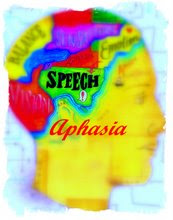Part 1: Signs, symptoms & strategies
By Dr. Laurence Miller
Signs and symptoms of abnormal behavior
In medicine, a sign is an objective observation or finding on a clinical examination. Examples include a limp while walking, high blood pressure on a cuff reading, or disorganized and delusional speech content during conversation. A symptom is a subjective experience that is reported by the patient, such as pain in the knee, throbbing headaches on exertion, or voices in his head telling him to fight off the evil forces threatening him.
A syndrome is a standard cluster of signs and symptoms that occur in a regular pattern, are typically associated with a particular causal factor, and/or occur in a particular subset of the population. Examples include degenerative arthritis of the knee in an ex-athlete, hypertensive headaches in an overweight woman with a high-salt diet, and paranoid schizophrenia in a homeless young man who abuses amphetamines and alcohol. A syndrome becomes a disorder when it interferes with important life functions of the patient, such as shortening life, decreasing the quality of health and well-being, or interfering with job, family, or social functioning.
Although different syndromes have different symptom clusters, there are some general signs of mental disorder that police officers should recognize (Pinizzotto & Deshazar, 1997; Russell & Beigel, 1990; Will & Peters, 2004).
General inappropriateness of behavior may be a sign of mental illness, although it may also be due to intoxication or even just youthful exuberance. Individuals with mental disorders tend to have their cognitive and behavioral gyroscopes set to extremes, characterized by either inflexibility and rigidity, or impulsivity and unpredictability. Emotions may range from elated to depressed, calm to panicked, and there may be an unnatural changeability of mood that is inconsistent with the circumstances. Attention, concentration, and memory may be impaired, either due to an organic brain syndrome or heightened distractibility from the anxiety of an internal dialogue. Severely disturbed subjects may be disoriented for time (“What day is this? Is it morning or afternoon?”), place (“Do you know where you are now? Where do you live?”), or person (“What’s your name? How old are you?”).
Speech may be tangential, flitting from topic to topic without a clear connection between them, or it may be circumstantial, remaining on, or returning to, the same topic, even after the conversation has moved on. Perseveration refers to abnormal persistence or repetition of speech or behavior. Pressured speechabnormally slow, occurs in a rapid-fire, jumbled form, as if the person is rushing to spill out all the words as fast as possible; conversely, speech output may seem as if the subject is weighing and measuring every word.
Aphasia refers to a group of organic language disorders characterized by various disturbances in comprehension and expression. Most commonly seen in elderly persons with strokes or dementia, subjects with receptive aphasia fail to comprehend normal speech, and may appear to be ignoring or defying the officer’s commands. The speech output of subjects with expressive aphasia may seem garbled and confused, and in severe cases may be limited to one- or two-word answers that are off the mark. Aprosodia refers to an abnormally flat and unexpressive tone and cadence of speech, even where the vocabulary and grammar are essentially intact. Some subjects may remain completely mute, either due to organic language disturbance or psychotic fear of saying anything. Remember, too, that perfectly healthy suspects may clam up to avoid incriminating themselves or just to be obstinate.






